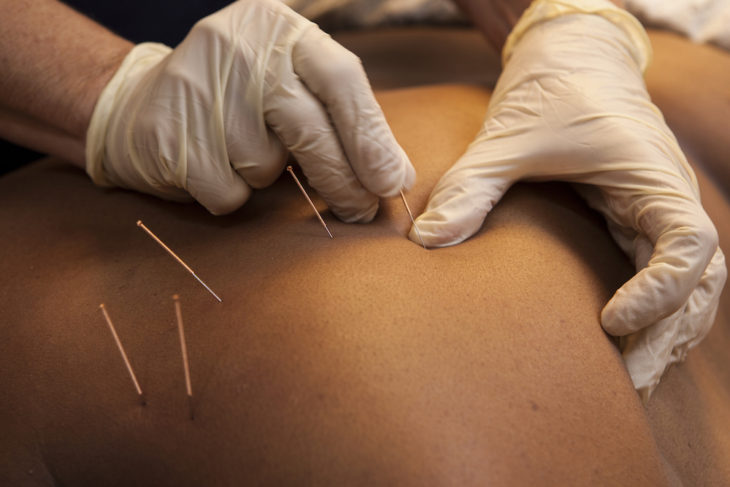
Dry Needling vs Acupuncture – What’s the Difference?
As dry needling has become a popular and common technique used by physical therapists to treat patients with chronic pain or injury, and as an aid to healing, it is common for patients to ask – what is the difference between acupuncture and dry needling? If you saw the techniques side-by-side, they look very similar and most people wouldn’t be able to tell the difference.
The practice of inserting small thin needles into the body to generate a healing response goes back many thousands of years. Chinese medicine doctors have used acupuncture to cure disease, injury and ailments for centuries. Acupuncture is rooted in Eastern medicine and involves training in traditional Chinese medicine. The needle placement is precise and focused around the meridians or energy pathways of the body. Sometimes, acupuncture is used in conjunction with other treatment techniques.
In acupuncture, the needles are placed more deeply into the skin and they are usually kept in place for a longer period of time. Acupuncture is performed by a certified in acupuncturist and someone trained in Oriental or Chinese medicine. Training to become an acupuncturist takes many years and the practice revolves specifically around the movement of energy or Chi in the body. The inserted needles help alter and direct the flow of energy towards different places in the body to promote healing.
Dry needling is a newer therapy that is often used by physical therapists in conjunction with other therapeutic techniques to treat pain that stems from overused muscles or sports injuries. Dry needling can also be effective in treating some cases of chronic pain, reduced joint mobility or other injuries. Tendon injuries also respond well to dry needling techniques. Physical therapists have extensive training in the nervous and muscular system as well as orthopedic pain and injuries.
With dry needling, the needles are placed directly into the tight or painful muscles to treat trigger points and relieve tension in that specific area. The placement of the needles is generally shallower that acupuncture and the needles are left in for a shorter period of time.
Dry needling is based on well-understood anatomical principles, the needle placement isn’t complex, as it is in acupuncture, and it is based on human anatomy. The small needles help to loosen tight muscles and deactivate trigger points that are irritable. Dry needling can have a positive effect on the neurological, vascular, biomechanical, immune and inflammatory systems. Research confirms its effectiveness, however because it is a newer technique, the research around dry needling is less abundant than around acupuncture.
When therapists perform dry needling the needles are used to cause a painless “twitch” that relieves tension in the affected muscle area. Different points around the area may require needle treatment and a few dry needle sessions might be needed before you feel better, but ultimately, dry needling can be a key component in reducing pain while improving muscle function and range.
If you have chronic musculoskeletal pain, low back pain, headaches, tendonitis or nerve irritation you may be a good candidate for dry needling. Therapists at Panorama will make sure dry needling is right for your treatment plan. If it is, patients often see it as a refreshing and drug-free alternative that can be used to treat pain.